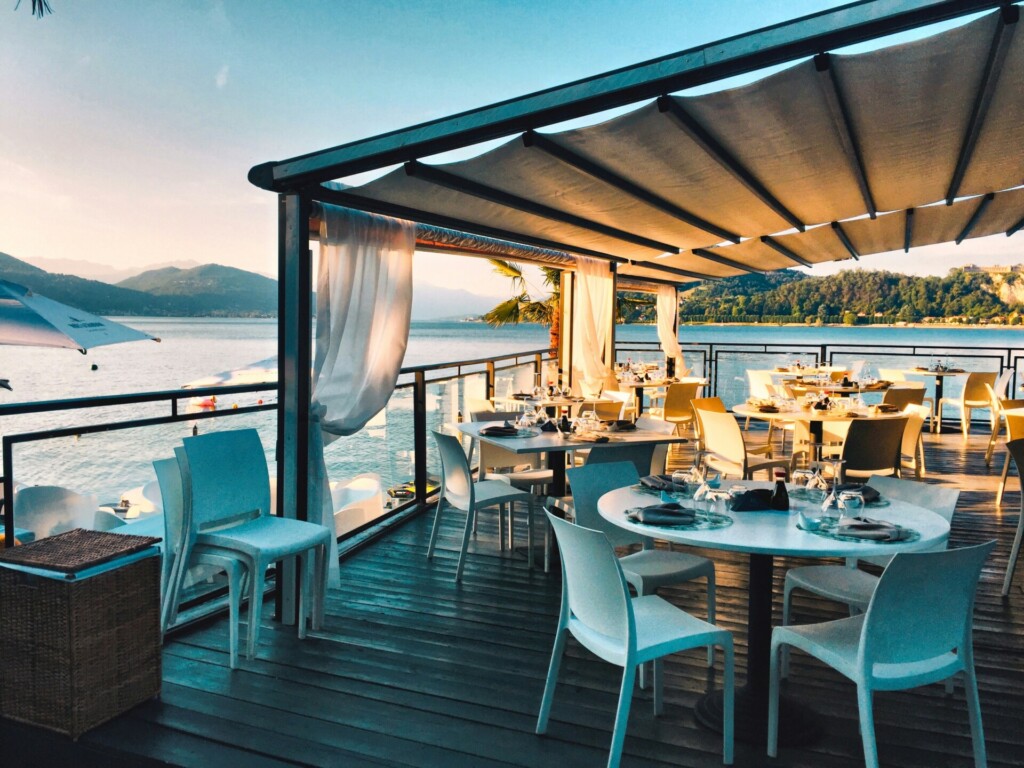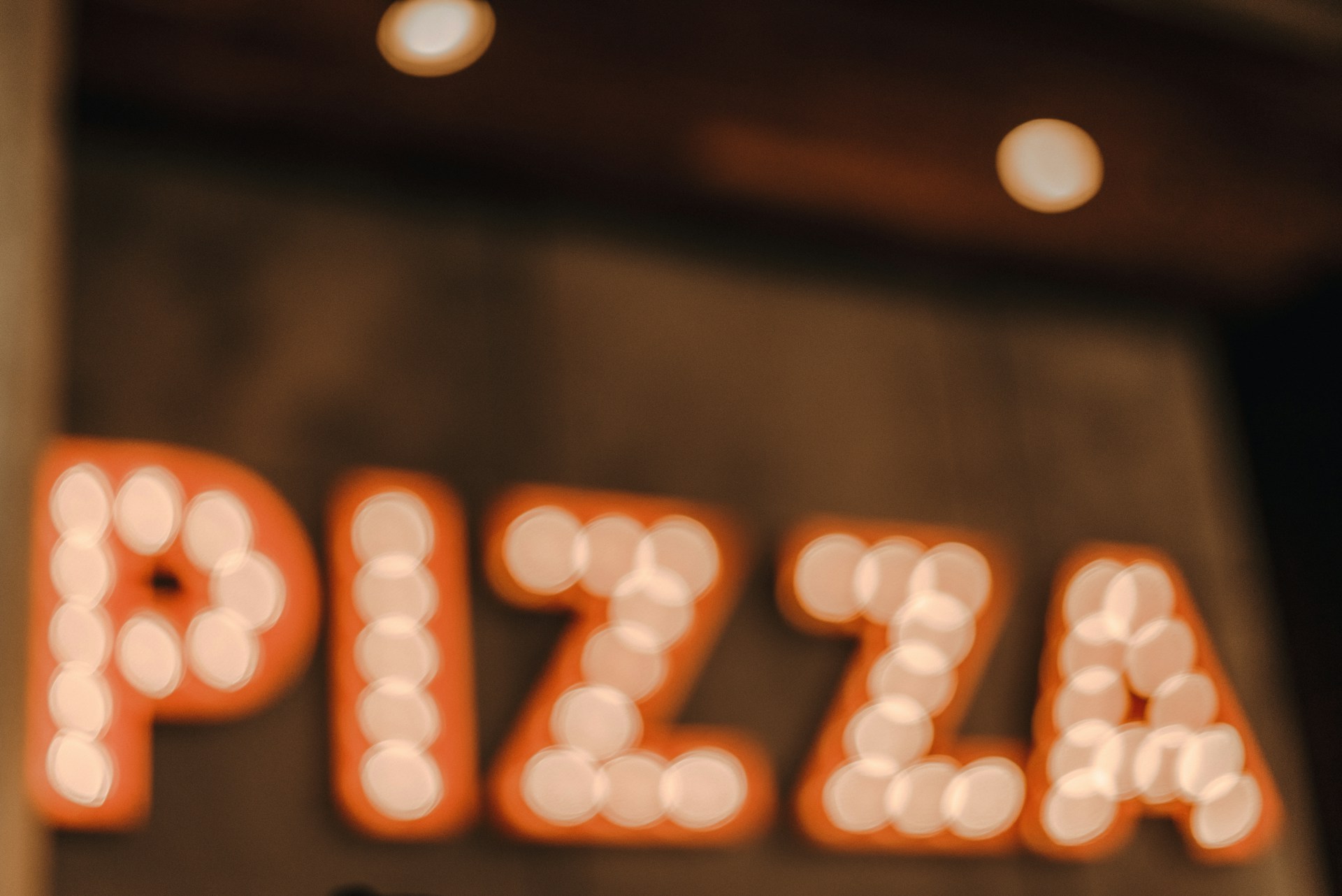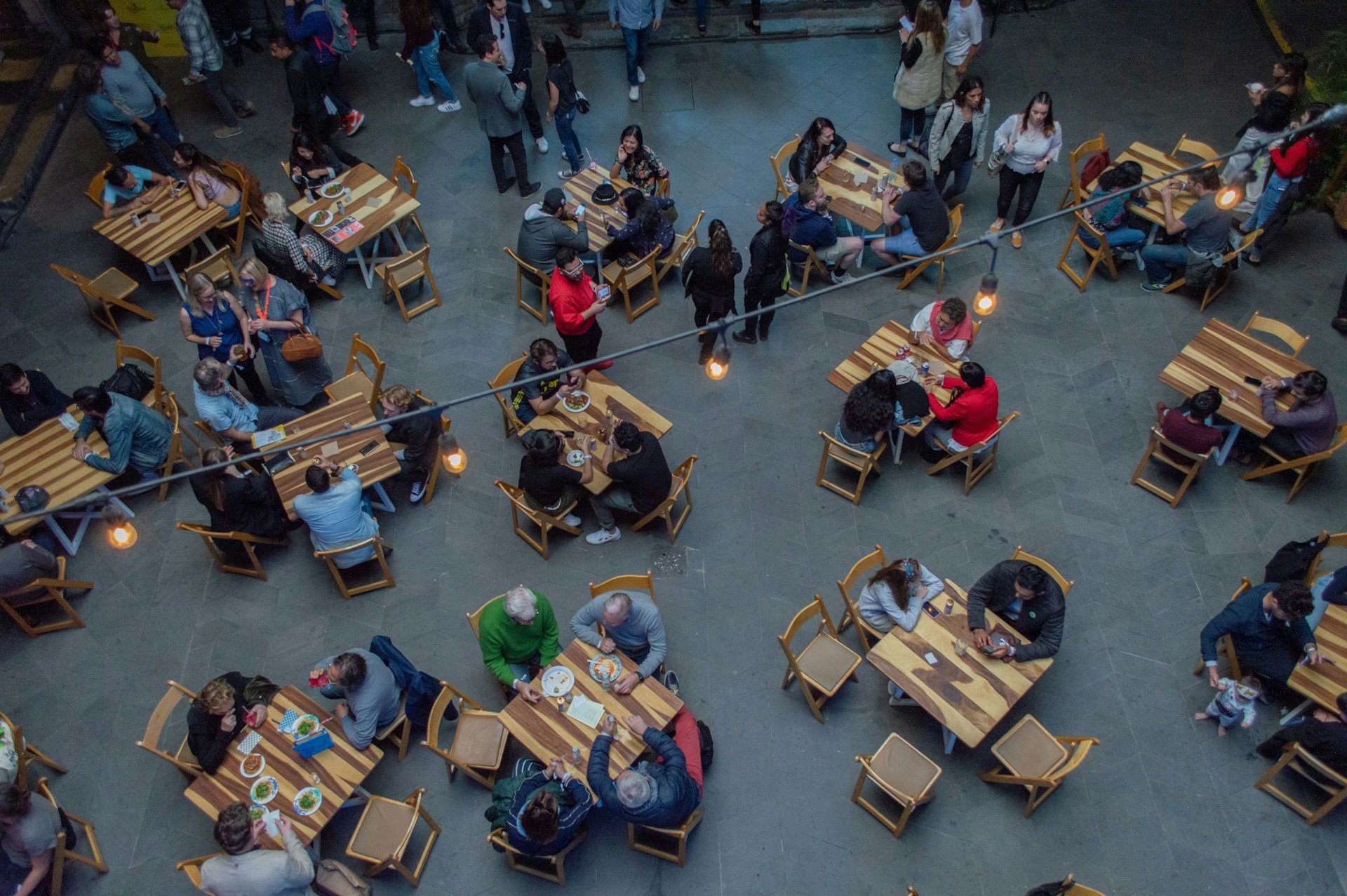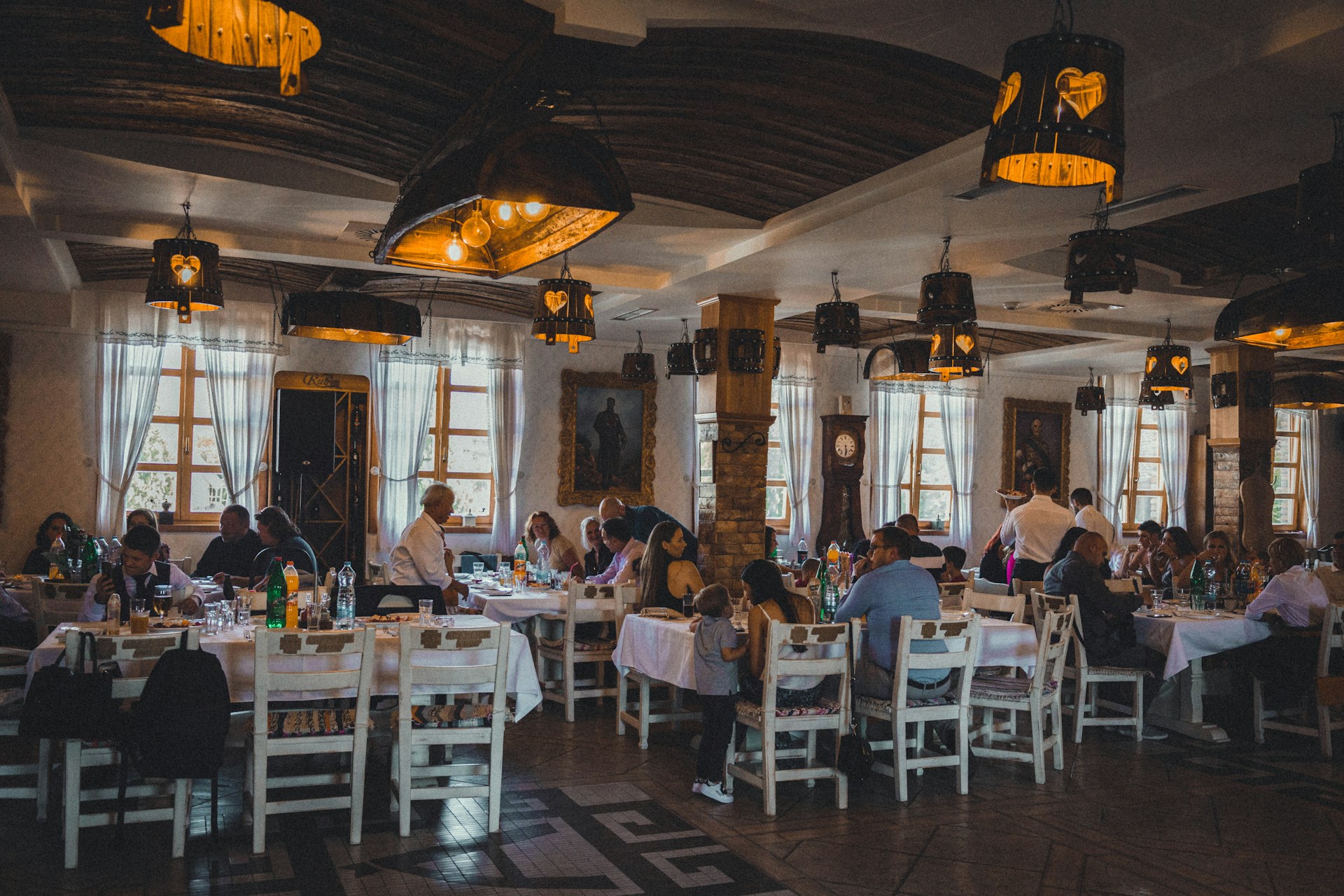Planning your first restaurant build-out requires careful financial preparation to avoid costly mistakes. For new restaurant owners, the complexity and scale of construction costs can be daunting. We build restaurant spaces to bring culinary visions to life, but without proper budgeting, those dreams can quickly turn into financial nightmares.
Typical restaurant build-out costs range between $150-$750 per square foot, with total investments usually between $250,000 and $2.5 million. These figures encompass everything from basic renovations of existing spaces to ground-up construction of high-end establishments. The wide range reflects the diversity of restaurant concepts, locations, and finish levels in the industry.
Underestimating budget requirements is a common mistake that can lead to restaurant failure. We’ve seen promising concepts falter because owners didn’t account for hidden costs or build in enough contingency. This guide will help you create a comprehensive budget plan that includes construction costs, equipment, pre-opening expenses, and other critical financial considerations.
By breaking down the major cost categories and highlighting potential pitfalls, we aim to give you a realistic picture of the capital needed to bring your restaurant to life. Whether you’re planning a cozy cafe or an upscale dining destination, understanding these fundamentals will set you up for a smoother build-out process and a stronger financial foundation for your new venture.
Disclaimer: Pricing figures are based on publicly available market data and are intended for general estimation purposes as of August 2025. They do not represent a formal quote from EB3 Construction. Actual costs will vary by project scope, location, labor rates, and material prices.
What Are the Major Cost Categories for Your Restaurant Build-Out?

At EB3 Construction, we recognize that organizing your restaurant build-out budget into distinct categories is crucial for effective planning and cost control. Here are the major cost categories you need to consider:
Construction and Leasehold Improvements
This typically accounts for 40-60% of your hard costs. It includes structural work, plumbing, electrical, HVAC, flooring, and other physical enhancements to the space. We coordinate closely with landlords to determine which improvements are covered under lease terms versus what falls to the tenant.
Furniture, Fixtures, and Equipment (FF&E)
FF&E represents 30-40% of the budget for most restaurant builds. This covers everything from dining room furniture to back-of-house equipment. For example, commercial chairs can range from $80 for basic models to $800 for high-end options. We help clients balance durability, aesthetics, and budget when making FF&E selections.
Kitchen Equipment
Depending on your restaurant concept and size, kitchen equipment alone can cost between $15,000 for a small operation to $250,000 or more for a large, full-service restaurant. We work with kitchen design specialists to optimize layout and equipment selection based on your menu and service model.
Technology and POS Systems
Technology investments can vary widely. Basic point-of-sale (POS) systems start around $99 per month for cloud-based options. More comprehensive setups with integrated inventory management, kitchen display systems, and tableside ordering can cost $50,000-$60,000 for purchase and installation. We assess your operational needs to recommend right-sized technology solutions.
Contingency Fund
We recommend allocating 10-15% of your total budget for contingencies. This buffer helps cover unexpected costs, changes in material prices, or necessary adjustments discovered during the build process. Having this cushion can prevent budget overruns from derailing your project timeline.
By carefully planning for each of these categories, we ensure your restaurant build-out stays on budget while delivering the functionality and atmosphere needed for a successful launch. Our team’s experience across numerous restaurant projects allows us to anticipate costs and provide accurate estimates tailored to your specific concept.
| Category | Cost Range | Description |
|---|---|---|
| Construction and Leasehold Improvements | 40-60% of hard costs | Includes structural work, plumbing, electrical, HVAC, flooring, and other physical enhancements to the space. |
| Furniture, Fixtures, and Equipment (FF&E) | 30-40% | Covers dining room furniture to back-of-house equipment. |
| Kitchen Equipment | $15,000 – $250,000+ | Varies based on restaurant concept and size. |
| Technology and POS Systems | $99/month to $60,000+ | Includes basic POS systems to comprehensive setups. |
| Contingency Fund | 10-15% of total budget | Buffer for unexpected costs or necessary adjustments during the build. |
How Should You Plan for Professional Services and Soft Costs?
When budgeting for your restaurant, it’s crucial not to overlook the significant impact of professional services and soft costs. These expenses may not be as tangible as kitchen equipment or furniture, but they are vital for ensuring your restaurant’s success and compliance with regulations.
Professional services represent a substantial portion of your budget, with costs varying based on expertise and location. For example, restaurant designers and architects typically charge between $100-$250 per hour, while interior designers range from $50-$200 hourly. These professionals offer invaluable expertise in creating efficient and attractive spaces that enhance the dining experience.
General contractors, who oversee the construction or renovation process, usually bill $50-$150 per hour. Their role in coordinating various aspects of the build-out is critical for staying on schedule and within budget. Other essential professionals include structural engineers ($100-$220/hour), electricians ($50-$130/hour), and plumbers ($45-$150/hour). These specialists ensure your restaurant meets safety standards and functions properly.
Beyond labor costs, it is important to account for permits and licenses. These can range from $50 to over $1,000 each, depending on your location and the specific requirements of your restaurant. It’s wise to research local regulations early in the planning process to avoid surprises that could delay your opening.
One often overlooked but crucial investment is proper documentation of standards, specifications, and training protocols. While it may be tempting to cut corners here to save money, this documentation is essential for preserving your restaurant’s intellectual property and maintaining consistency despite staff turnover. Without it, you risk losing valuable operational knowledge and procedures when employees leave.
To illustrate the potential costs, let’s consider a hypothetical scenario:
| Cost Category | Rate | Explanation |
|---|---|---|
| Restaurant Designers and Architects | $100-$250/hr | Expertise in creating efficient, attractive spaces |
| Interior Designers | $50-$200/hr | Enhancing dining experience aesthetics |
| General Contractors | $50-$150/hr | Overseeing construction or renovation process |
| Structural Engineers | $100-$220/hr | Ensuring safety and compliance |
| Electricians | $50-$130/hr | Installation of electrical systems |
| Plumbers | $45-$150/hr | Installation of plumbing systems |
| Permits and Licenses | $50-$1,000+ | Cost varies depending on location and requirements |
Disclaimer: Pricing figures are based on publicly available market data and are intended for general estimation purposes as of August 2025. They do not represent a formal quote from EB3 Construction. Actual costs will vary by project scope, location, labor rates, and material prices.
As you can see, these soft costs can add up quickly. However, investing in quality professional services often pays dividends in the long run by helping avoid costly mistakes, ensuring compliance, and creating a solid foundation for your restaurant’s operations.
When planning your budget, it is recommended to set aside 15-20% of your total startup costs for professional services and soft costs. This allocation allows for thorough planning, proper documentation, and the engagement of qualified professionals to support your restaurant’s launch and ongoing success.
Remember, while it may be tempting to cut costs in these areas, doing so can lead to expensive problems down the line. By properly investing in professional services and soft costs upfront, you set yourself up for smoother operations and better long-term prospects in the competitive restaurant industry.
What Pre-Opening Expenses Should You Include in Your Budget?

Pre-opening expenses are frequently underestimated, but they can significantly impact your restaurant’s success before you’ve even opened. We always budget for at least 3-6 months of rent, labor, and utilities prior to opening day. Why? Because unexpected delays are almost inevitable in this industry.
Recipe testing is a crucial yet often overlooked expense. We typically either secure temporary kitchen space or rent equipment to perfect our menu offerings. This process requires not only ingredients but also time and labor costs for our culinary team. The initial investment in inventory to finalize recipes can be substantial.
Marketing is another significant pre-opening cost. We allocate approximately 6% of our projected first-year sales to marketing, dedicating about 30% of that specifically to pre-opening efforts. This covers everything from social media campaigns to launch party invitations.
Staff training is more complex than many realize. Beyond recruitment costs and hourly wages during training, we invest in developing comprehensive training materials and programs. A well-prepared opening team is invaluable.
Grand opening expenses vary widely based on concept and market strategy. While some restaurants opt for a soft opening, others go all out with lavish events costing upwards of $100,000. We carefully weigh the pros and cons to determine the right approach for each situation.
The hard truth? Opening delays can increase pre-opening expenses by up to 300% in some cases. We’ve seen it happen repeatedly. That’s why we build significant contingencies into our budgets and maintain a precise focus on cash burn rates leading up to opening day.
Proper pre-opening budgeting isn’t just about crunching numbers – it’s about giving your restaurant the strongest possible start. Though the costs may seem daunting, cutting corners here often leads to bigger issues later. With careful planning and realistic expectations, we aim for long-term success.
| Pre-opening Expenses | Typical Costs |
| Rent | 3-6 months |
| Labor | 3-6 months |
| Utilities | 3-6 months |
| Recipe Testing | Temporary kitchen or rented equipment costs |
| Marketing | 6% of projected first-year sales |
| Staff Training | Comprehensive training materials and programs |
| Grand Opening Events | Varies, some may exceed $100,000 |
| Contingency Fund | 10-15% of total costs |
How Can You Create a Detailed Restaurant Budget Document?
Creating a comprehensive restaurant budget is vital for financial planning and management. A detailed budget acts as your financial roadmap, helping you allocate resources effectively and track performance. Here’s how to create a thorough restaurant budget document:
Organize Revenue by Sales Stream
When structuring your revenue budget, break it down by different sales streams. This typically includes:
- Dine-in sales
- Take-out orders
- Catering services
- Delivery sales
Separating these streams is crucial, especially if pricing and costs differ between them. This granular approach allows for more accurate forecasting and analysis.
Use Historical Data and Industry Standards
When budgeting expenses, leverage historical financial data from your restaurant if available. For new establishments, research industry standards to inform your projections. Key expense categories to include are:
- Food and beverage costs
- Labor expenses
- Rent or mortgage payments
- Utilities
- Marketing and advertising
- Equipment maintenance and replacement
- Insurance premiums
- Licenses and permits
Account for Seasonality
Restaurant sales often fluctuate throughout the year. Create monthly budget breakdowns to reflect seasonality in both revenue and expenses. This approach helps you anticipate cash flow challenges during slower periods and capitalize on peak seasons.
Include Startup and One-Time Costs
For new restaurants, ensure your budget encompasses all startup expenses:
- Construction or renovation costs
- Furniture, fixtures, and equipment (FF&E)
- Professional services (legal, accounting, design)
- Permits and licenses
- Pre-opening expenses (training, marketing)
Don’t forget to budget for a contingency fund of at least 10-15% to cover unexpected costs or overruns.
Detail Funding Sources
Clearly outline all sources of funding in your budget document, including:
- Personal investments
- Bank loans
- Investor capital
- Grants or subsidies
This provides a complete picture of your restaurant’s financial structure and obligations.
Implement Regular Budget Reviews
A budget is not a static document. Schedule regular reviews—monthly at minimum—to compare budgeted amounts against actual spending. This practice allows you to:
- Identify variances early
- Make necessary adjustments
- Refine future projections
Use these reviews to inform strategic decisions about menu pricing, staffing levels, and operational efficiencies.
Utilize Budgeting Tools and Templates
To streamline the budgeting process, consider using specialized restaurant budgeting software or templates. These tools often include:
- Pre-built expense categories
- Automated calculations
- Visualizations for easier analysis
While templates provide a solid starting point, customize them to fit your restaurant’s unique needs and characteristics.
Project Cash Flow
Beyond basic income and expense projections, create a cash flow forecast. This helps you anticipate periods when you may need additional working capital or when you can invest in growth opportunities. Factor in the timing of payments, such as:
- Supplier terms (e.g., net 30 days)
- Payroll cycles
- Tax payment deadlines
A robust cash flow projection is crucial for maintaining financial stability and avoiding cash crunches.
Remember, the key to effective restaurant budgeting is thoroughness and regular engagement with your financial data. By creating a detailed budget document and actively managing it, you’ll be better equipped to navigate the financial challenges of the restaurant industry and position your business for long-term success.
Conclusion: Setting Your Restaurant Up for Financial Success

Planning the budget for your first restaurant build-out demands careful consideration of all potential expenses. We recognize the importance of creating comprehensive categories for construction, equipment, professional services, and pre-opening costs to avoid the common mistake of underestimation, which often causes many restaurants to fail within their first year.
In coordinating restaurant projects, we always highlight the need for a substantial contingency fund, generally 10-15% of the total budget. This buffer provides the flexibility to manage unexpected costs that typically arise during construction and launch. We also recommend regularly comparing actual expenses to your budget throughout the process. This continuous monitoring allows for timely adjustments if certain categories begin to exceed projections.
While the initial investment may seem overwhelming, appropriate financial planning significantly enhances your chances of success in the competitive restaurant industry. The truth is that restaurant profit margins are often slim, particularly in the early years. By budgeting thoroughly from the beginning, you create a solid financial foundation to withstand challenges and seize opportunities as your business grows.
We urge you to take the time to develop a detailed business plan that incorporates all the budgeting elements we’ve discussed. This plan will act as your roadmap, guiding key decisions and aiding in securing necessary funding. With careful preparation and realistic projections, you’ll be setting your new restaurant up for long-term financial success.
The restaurant industry can be unforgiving, but it offers immense potential for those who approach it strategically. By investing effort upfront to create a comprehensive budget and business plan, you’re taking a vital step toward turning your restaurant dream into a thriving reality. We wish you the best as you embark on this exciting venture!
Contact EB3 Construction to discuss how we can help bring your restaurant vision to life with expert budgeting and build-out services.




